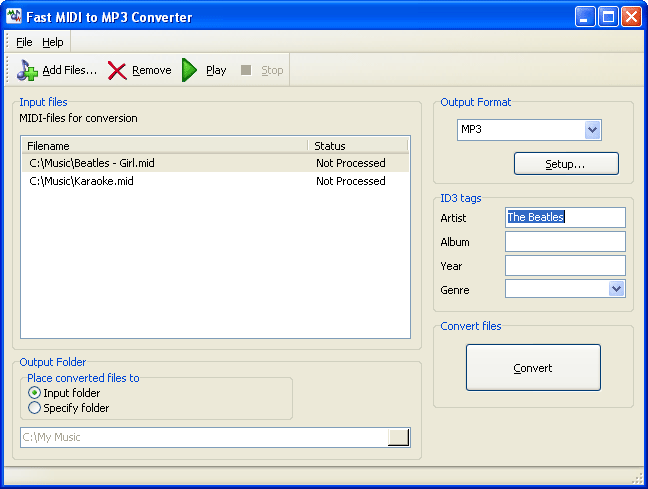

Whether you are working with someone using the same DAW or a different one, it is always smart to make your filenames as descriptive as possible. Then you can use a service like Splice, Dropbox, or Google Drive to share the project folder, allowing you and your collaborator to work directly out of the same location. This will ensure any samples you use are contained in the project folder, eliminating issues for the collaborator. The other thing you must do is hit “collect all and save” under the File menu. It’s always good to save new versions each time one of you makes changes to avoid any potential issues with this. Just make sure they don’t unfreeze on their end while working on it as it could mess with the plugin settings. You don’t need to flatten the track to audio, which is great because when if send it back and you want to keep working on that track’s settings, you can simply unfreeze it. First, make sure you freeze any tracks containing plugins that they don’t have. If your collaborators are also using Ableton Live, you have to do two things to make sure they can open your session without issue. Also known as a ‘working mix’ or ‘reference mix’. This might be a mix for someone to record their vocals to, or to give to the record label to show you are, in fact, making progress on the album, for you to listen to in the car because you’re pumped about your new song, or to give to the person who’s actually mixing the song in order to show them what you want loud or quiet / any special effects requests you have. Rough Mix - any mix of a song that is not intended to be released as-is. This isn’t just me telling you kids to get off my lawn it’s smart to use terms that as many people as possible agree on in order to reduce confusion. Track(s) vs Song(s) - Since “track” refers mostly to a part of the production such as kick, snare, vocal, or synth pad, the clearest way to refer to the piece of music you’re working on is as a “song” and not a “track”. * there are exceptions, including emailing a mix as an MP3 to someone for them to just listen to and not work on. Calling this “Data Reduction” is preferable to “Data Compression” as the latter is too easily confused with dynamic range compression. There’s almost always some audible artifacts due to this process, and those artifacts only get compounded, which is why the best practice is to never* use data reduced audio! Popular data reduced file types include MP3 and M4A / AAC.
#CONVERT ABLETON MIDI TO MP3 TV#
Stems give the TV / film people the ability to slightly adjust the mix of a song, but not (usually) in the fun / creative ‘remix’ sense.ĭata Reduction - Also known as data compression, data reduction is the act of compacting audio file sizes while retaining some sonic fidelity.

Part of the reason we might want to create stems is for use on TV or film, where the show wants the song to play normally for a few seconds but when the actors’ dialogue begins, have the songs’ vocals get quieter or be muted entirely. Frequently there will be a ‘drums’ stem, a ‘bass’ stem, ‘keys’, ‘guitar’, ‘percussion’, ‘background vocals’, and ‘lead vocals’. So they will usually include a lot of processing (EQ, compression, reverb, etc.) and prohibit separation of the individual elements such as individual drum layers. Stems - Commonly confused with multitracks, stems are also WAV or AIFF files that make up a song, but these files consist of entire groups of instruments / tracks *as they appear in the final mix*. In order to not tie the hands of your collaborators, these files shouldn’t have any effects or automation (other than effects that are totally essential to the production) on them. Your collaborators should be able to line up the start of all of these files and have them play perfectly in time. Each of these files should start at the same point (almost always from 0:00), whether that means there’s a lot of silence in the file or not. These are what you send to someone when they’re going to mix your song. Multitracks - WAV or AIFF files of the individual instruments and elements that make up a song. So let’s go over some definitions, especially those that are frequently confused or misunderstood. But when we’re sending files back and forth, we have to be crystal clear with our terms. In person, we have the luxury of pointing to the screen and chatting about the electronic music production process.

So whether you’re a beginner or a professional, here’s a handy Ableton tutorial to streamline your online collaboration!

#CONVERT ABLETON MIDI TO MP3 HOW TO#
We’re all learning how to produce music during a pandemic, and if any good has come out of this, it’s that we’re being forced to learn (or re-learn) some healthy music production habits.


 0 kommentar(er)
0 kommentar(er)
